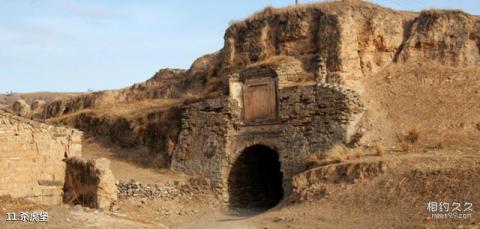
Introduction to Shahu Fort: Shahu Fort is located about 2 miles southeast of Shahukou Pass on the Great Wall of the Ming Dynasty. Partially composed. The Shahu Fort is in the north and was built in the 23rd year of Jiajing in the Ming Dynasty (1544). It is 2 miles in circumference and 3 feet and 5 feet high. The Pingji Fort is in the south and was built in the 43rd year of Wanli in the Ming Dynasty (1615). Fort is the same. Later, due to the prosperity of border trade and population, two east and west walls were built between the two forts to connect the two forts. It is called Zhongguan, with doors opening on the front, back, left, and right, and connecting east, west, north, and south. It becomes a large fort in Zhou Sanli. It is customary to call it Tiger Killing Fort.
The combat readiness status of Tiger Killing Fort is the same as that of the pass. It is very important. They are the horns of each other, stationing troops and raising the people, and guarding the pass. When the castle was built in the early Ming Dynasty, it was mainly used for garrisoning troops. It was once called Tumao River Fort. After the horse market was established in the fort in the third year of Zhengtong in the Ming Dynasty (1438), the Han-Mongolian border trade began. Later, the border trade was sometimes closed. By the Longqing period, Only then did the horse market stabilize. At the end of the Ming Dynasty, the horse market became relatively prosperous and became the most important place among the five forts in Yunzhong (shahubao, Zhenqiangbao, Deshengbao, Hongzhibao and Xinpingbao); in the Qing Dynasty, the Han and Mongolian families There are also inspection offices, supervision offices, post missionary offices, garrison offices, Chinese military headquarters offices, and auxiliary town offices inside and outside Shibao. They are commonly known as the "eight major yamen". The total population of the garrison, yamen, residents, merchants, and refugees has reached With nearly 40,000 people, various government offices, temples, schools, and inns dotted the streets and alleys. There were more than 50 temples and nearly 3,600 households. The economy and population were extremely prosperous, and it was called "Little Beijing" at the time.
